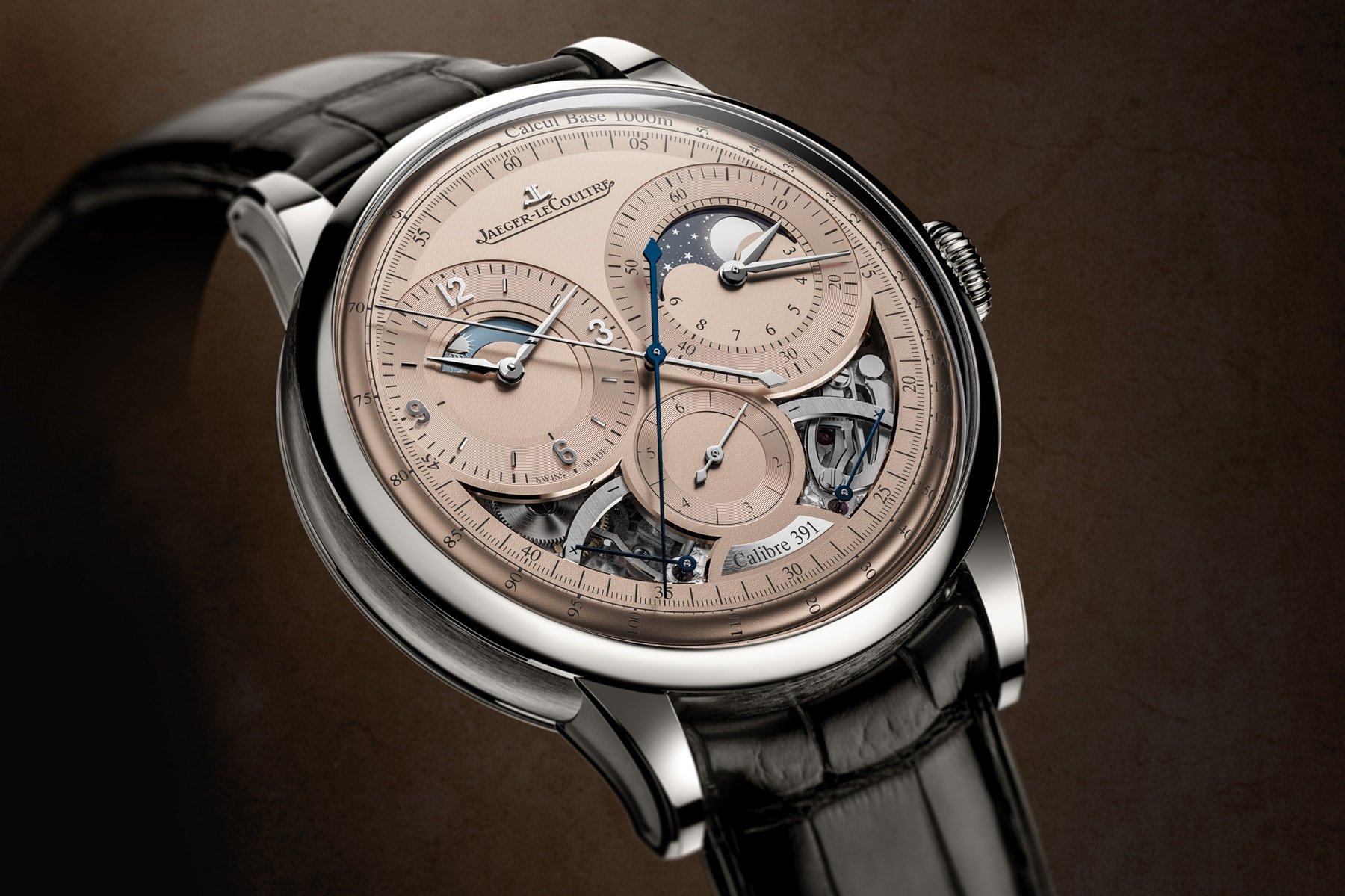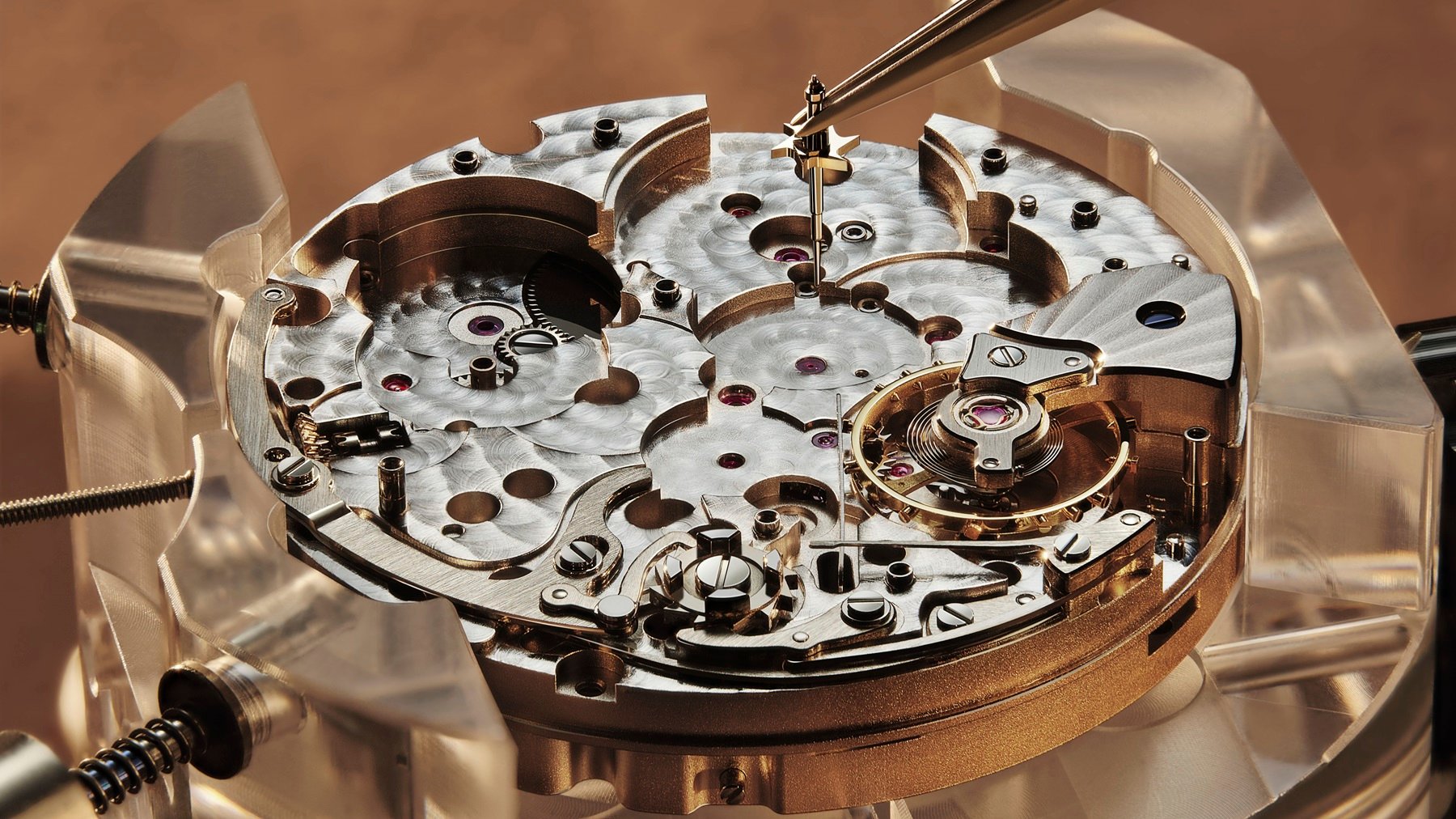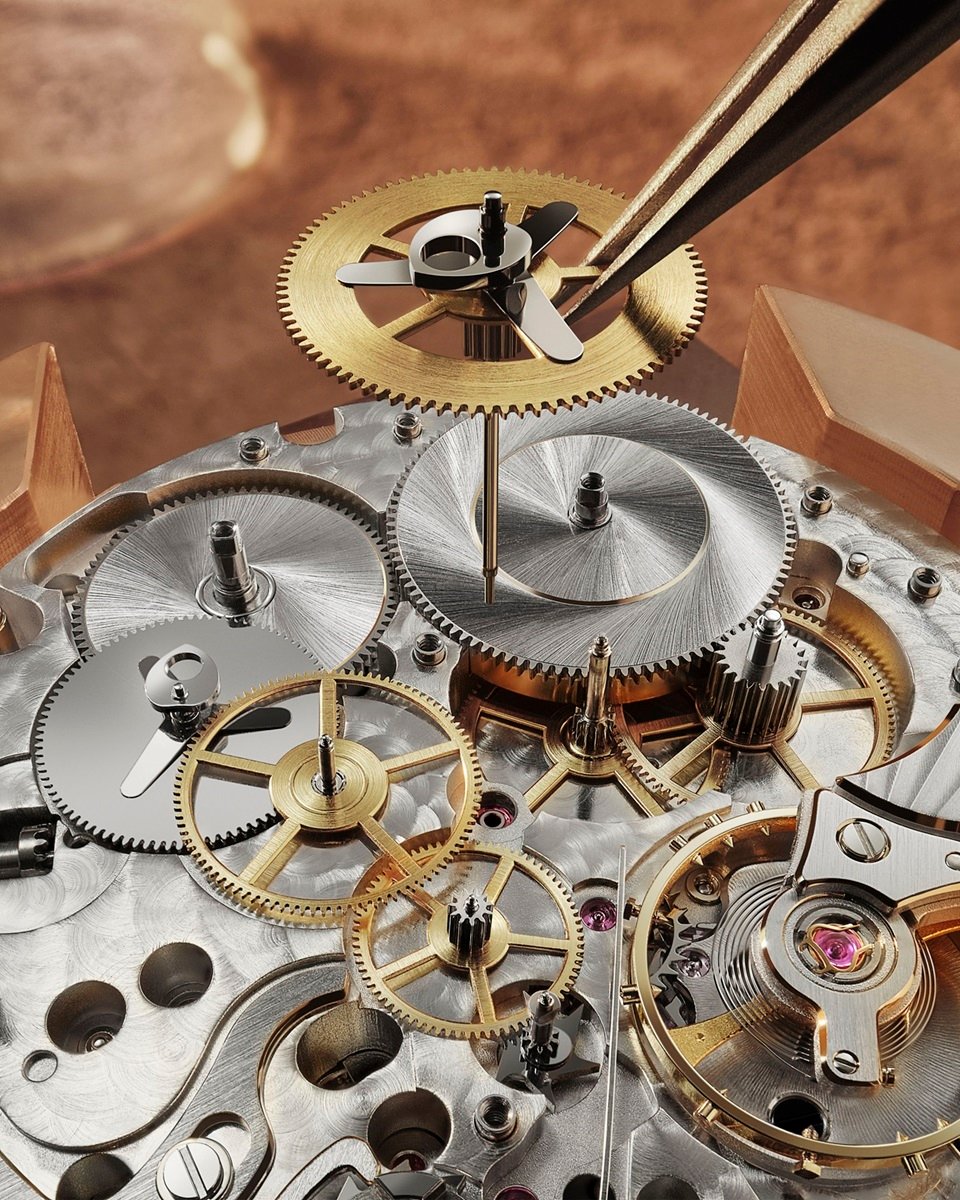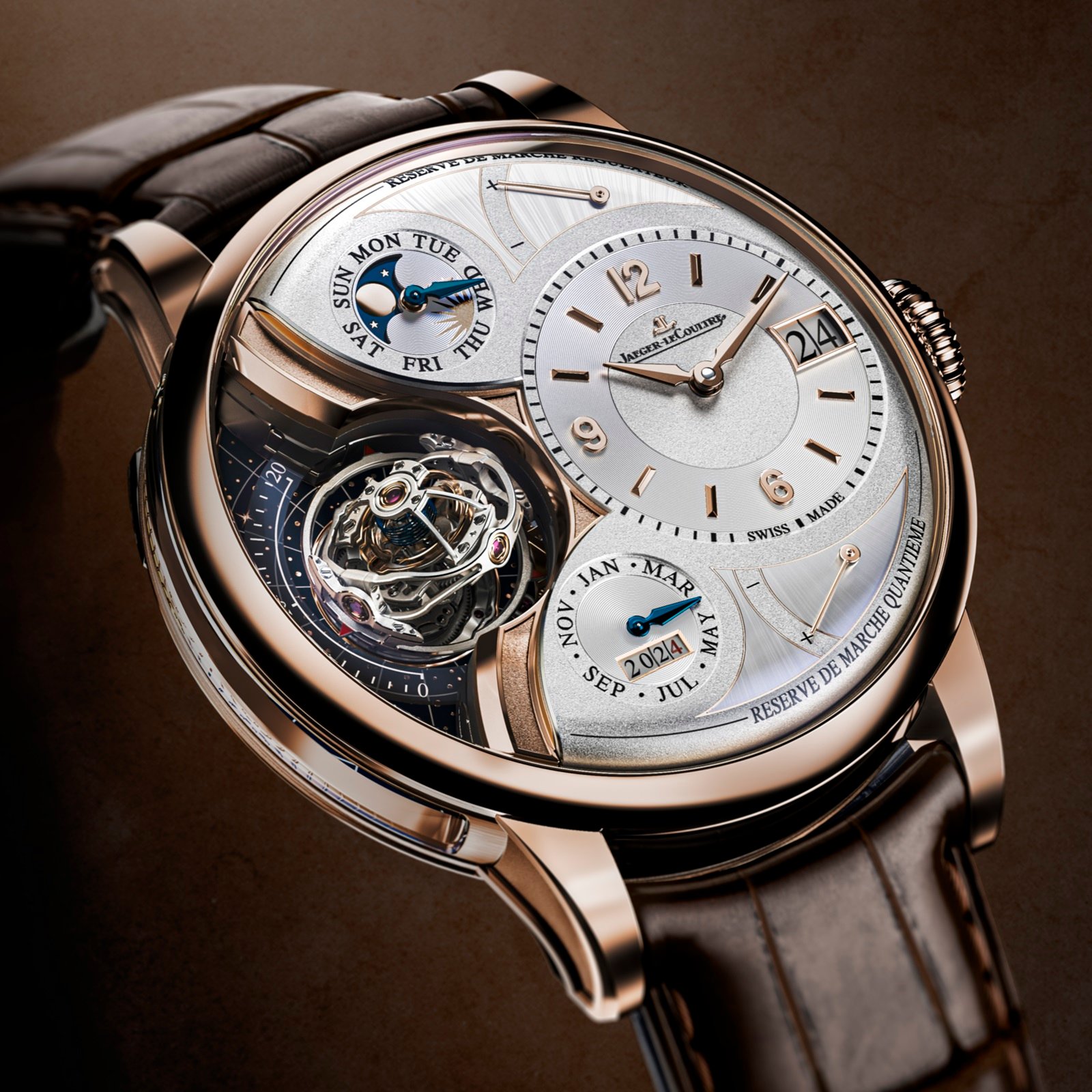The Jaeger-LeCoultre Duometre Returns! — Meet The Duometre Chronograph Moon And The Duometre Heliotourbillon Perpetual
Jaeger-LeCoultre is a great watch brand, but “Le Grand Maison” from Le Sentier is arguably an even greater movement maker. There’s an impressive wall in the manufacture that brings to life the brand’s incredible tradition of creating innovative movements in all shapes and sizes. One of JLC’s latest movement highlights was the Duometre concept, which debuted in 2007 in the shape of a chronograph. A Duometre movement features two separate barrels and two independent gear trains. Both link to a single escapement, ensuring that the complication doesn’t negatively affect the time-keeping function. For some reason — was it because of price or complexity? — the Duometre faded away not too long after making its debut. But this year, the double-gear-train concept returns inside a couple of noteworthy watches — the Duometre Chronograph Moon and the mind-blowing Duometre Heliotourbillon Perpetual.
The Duometre from 2007 might have been the first of its kind, but way back in 1881, Jaeger-LeCoultre built the Cal. 19/20RMSMI, a pocket-watch movement equipped with two barrels. The goal was to create a movement with a complication that stopped drawing power from the main barrel and thus disrupting the constant supply of energy required for an escapement to function as precisely as possible. It was an experimental movement with just one gear train, and it didn’t really do what it was intended to do, so it never made it into production. It took 126 years for the JLC watchmakers to come back to the concept in the shape of the Duometre. Adding a second gear train solved the original problem. And now, 17 years later, the second generation of the Duometre makes an appearance.
The Jaeger-LeCoultre Duometre Chronograph Moon in platinum and pink gold
The patented Duometre concept inside the new Duometre Chronograph Moon is something fans of traditional and innovative watchmaking drool over. When it comes to watchmaking at JLC, tradition and innovation go hand in hand. It sounds like a cliché, but as it happens, clichés are most often true. Watchmakers traditionally strive to evolve their craft, and so does JLC. The creation of a movement with two separate barrels and two independent gear trains — one to drive the escapement (for timekeeping) and one to power the complications — stands in a tradition of horological evolution. The different Duometre calibers that JLC created guarantee that the movement’s isochronism, or “heartbeat,” is not compromised by the operation of a complication.
The Duometre Chronograph Moon: an entirely new movement in an entirely new case
The all-new caliber 391 beats inside the Duometre Chronograph Moon. It was developed from the ground up but based on the original principles of the Duometre concept. Caliber 391 is a fully integrated monopusher chronograph movement with moonphase and night/day complications. It also shows two power reserve indicators and a seconde foudroyante display. When the chronograph is running, this flying hand ticks six times to make a complete rotation in one second. Consequently, when the chronograph is stopped, the measured interval is accurate to 1/6th of a second.
On the dial side, the Duometre Chronograph Moon also shows the chronograph’s combined 12-hour/60-minute register at 2 o’clock. Also present there is the moonphase indicator, while the main time and night/day indicator take their place at 10 o’clock. Two small, open-worked sections allow you to take a peek at the mechanical beauty of the caliber, but the transparent case back offers full disclosure. The micromechanical spectacle presents things like bridges bearing sunray Geneva stripes, which are decorated one by one and radiate from the center of the regulating organ to the edge of the caliber. Other traditional Haute Horlogerie finishes, like beveled and polished angles, define the edges of the bridges. And there’s also perlage on the main plate.
The very tactile crown is new too
The hand-wound movement finds its home inside a new 42.5 × 14.2mm case. This 43-part housing shows a mixture of polished, brushed, and micro-blasted surfaces and is water resistant to 5 bar. Its shape takes inspiration from the savonette pocket watches that JLC created in the 19th century. But the original case with its rounded contours got a contemporary makeover. These new Duometre watches have a convex crystal and a rounded bezel. The design of the crown is new as well. It has deep, rounded notches that make it comfortable and easy to use.
The Duometre Chronograph Moon comes in two versions. There’s the pink gold model (Q622252J) with a silver opaline dial that costs €79,000. In addition, there’s a platinum iteration with a copper-colored opaline dial (Q622656J) and a price of €97,000.
The Jaeger-LeCoultre Duometre Heliotourbillon Perpetual takes a spin on multiple axes
At JLC, they certainly know how to make a tourbillon. And double-axis tourbillons are something of a specialty. Remember the different iterations of the Gyrotourbillon or perhaps the Sphérotourbillon? These multi-axis tourbillons are complex mechanical ballets that are pushing the limits of watchmaking. And now there’s something called Heliotourbillon. This extremely complicated type of tourbillon uses a completely new construction comprising three titanium cages rotating on three axes, a first for JLC. Inside the 163-part tourbillon cage, which weighs less than 0.7 grams and spins on ceramic ball bearings, you will find a cylindrical hairspring, another JLC specialty.
We must also not forget that this very kinematic and cinematic tourbillon mechanism comes in a 44 × 14.7mm pink gold case. Not only that, but the new manual-winding in-house caliber 388 also pairs the Duometre concept with a perpetual calendar with a big date. The price of this spectacular piece of Haute Horlogerie goodness called the Duometre Heliotourbillon Perpetual (Q6202420) is €484,000. In case you’re still interested, it’s a limited edition of just 20 pieces.
In the spirit of “Make Complications Great Again,” I applaud the return of the Jaeger-LeCoultre Duometre. We’re going to find out if the watch world is finally ready to fully appreciate, embrace, and value the complicated, innovative, and fascinating Duometre concept. To start, you can tell us what you think of it in the comments below.







